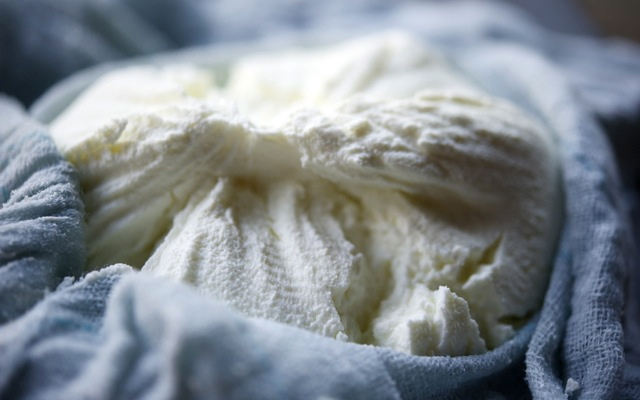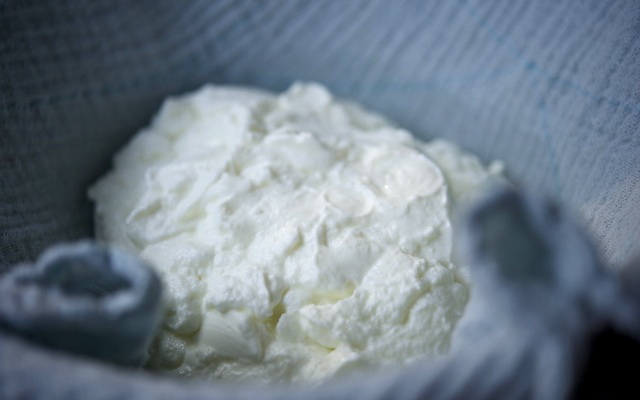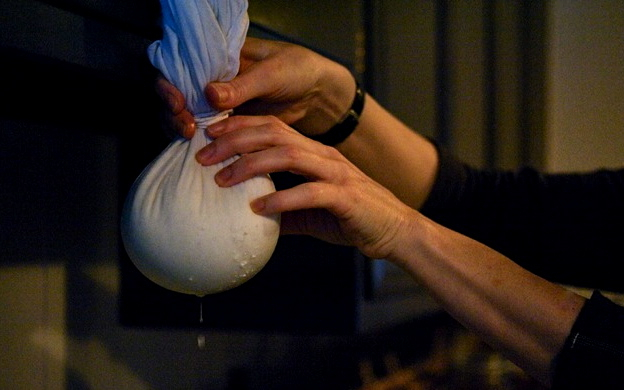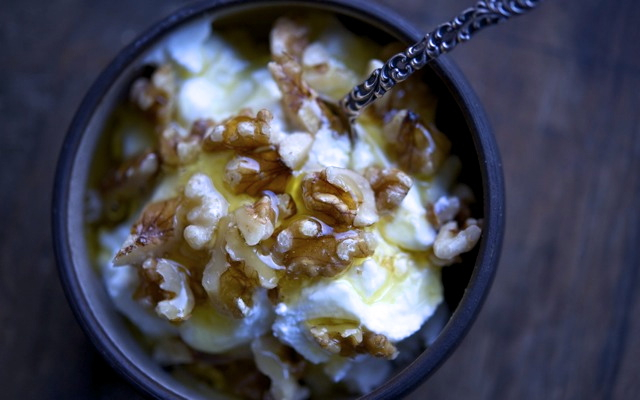10.9.13 Thick & Thin

If, as Clifton Fadiman so memorably phrased it, cheese is milk’s leap toward immortality, then yogurt must be its first tentative step in that general direction. How milk got culture is actually a bit of a mystery. Most likely, the earliest yogurts were spontaneously fermented by the wild bacteria that proliferated in the goatskin bags where milk was stored. (Yo, Urg, get a whiff of this!) Wherever it took place, the result— particularly when eaten with honey—has been known as food of the gods since ancient times. And, like all godly things, down here on earth it's been widely corrupted. Perhaps you read about the recent debacle with Chobani, the Greek yogurt brand that has been giving Fage a run for its money? They recalled a ton of their product after reports that "moldy" and "fizzing" yogurt in "bloated" containers was making consumers "violently ill." There are so many things wrong with that statement that I don't even know where to begin, so I'll just say that virtually everything seems to suffer from being produced in enormous quantities. Which is why you might want to consider springing for small-batch artisanal yogurt or, better yet, making your own. It's all about quality control and maximum flavor. And health.

Here’s what happens: A host of bacteria (usually lactobacilli and bifidobacteria) ferments lactose to create lactic acid; this in turns acts on milk protein to give yogurt its firmer texture and characteristic tang. All you do is get your hands on some excellent milk, heat it up, stir in a little yogurt with live cultures as your starter, and let this ferment and set up for a few hours in a warm spot. Presto: yogurt!

The Greeks do eat it—but so do the Indians, Russians, Mexicans, Turks, Nepalese and Middle Easterners. In Greece, it’s often made from sheep’s milk yogurt, and this is the kind I like best. For all the popularity of Greek yogurt in America, the real thing is nearly impossible to find here. But you can seek out sheep’s milk yogurt and from there a little straining is all that’s required to achieve the desired texture. This process removes some of the lactose, so what results is actually a bit lower in sugar and carbohydrates than the unstrained kind, though the wonderfully rich taste belies this. It works with any kind of yogurt—cow, goat, even lowfat, if you must.

My preferred method is to dump two cartons of plain organic yogurt into a cheesecloth, tie it up with a bit of string and hang it to drain for most of a day over my kitchen sink. You can also line a colander with cheeseclth, set this in a bowI and keep it in the fridge overnight while the yogurt drains. By the time the volume has decreased by about half, it has become super dense and rich.
From there, you can go anywhere. Stir in some chopped cucumber, garlic, olive oil, mint and sea salt for the classic Greek dip, tzatziki, lovely with grilled lamb or eggplant. Use it to make the very best frozen yogurt. Try it spread thickly on toasted bread with jam or olive oil and salt. Spoon up a cupful adorned only with a few chopped walnuts and an unrestrained drizzle of honey. Think of all this as your divine right, passed down to you through the ages.
P.S. Still have not heard from the mysterious MARIA who won my fall giveaway. Unfortunately, she has an AOL email address, and those always bounce back to me. Maria? Come on down!
Yogurt
- — 1 quart best quality whole milk
- — 1/4 cup plain whole milk yogurt, with live cultures
Clean a quart jar by filling it with boiling water it and letting it stand for 10 minutes. Pour out the water and let the jar air dry.
Heat the milk in a heavy saucepan until it reaches 180ºF. (Clip on a candy thermometer or use an instant read one.) Remove from heat.
Allow the temperature to drop to 115ºF and then stir in the 1/4 cup of yogurt. Pour this mixture into the jar and cover it with a lid.
Place the yogurt in a warm spot and leave it undisturbed for 10-12 hours. An oven with the pilot light on works well. You can also try wrapping it in a towel, or placing it atop a heating pad on low. The longer you ferment it, the more tart the yogurt will be. Taste it to see if it's to your liking.
Chill the yogurt in the fridge until quite cold, at least three hours. It will thicken up as it cools.
If you like a thicker yogurt, you may now strain it by allowing it to hang in cheesecloth or a clean kitchen towel until the excess liquid (whey) has drained out.
 Download Recipe
Download Recipe






19 Comments